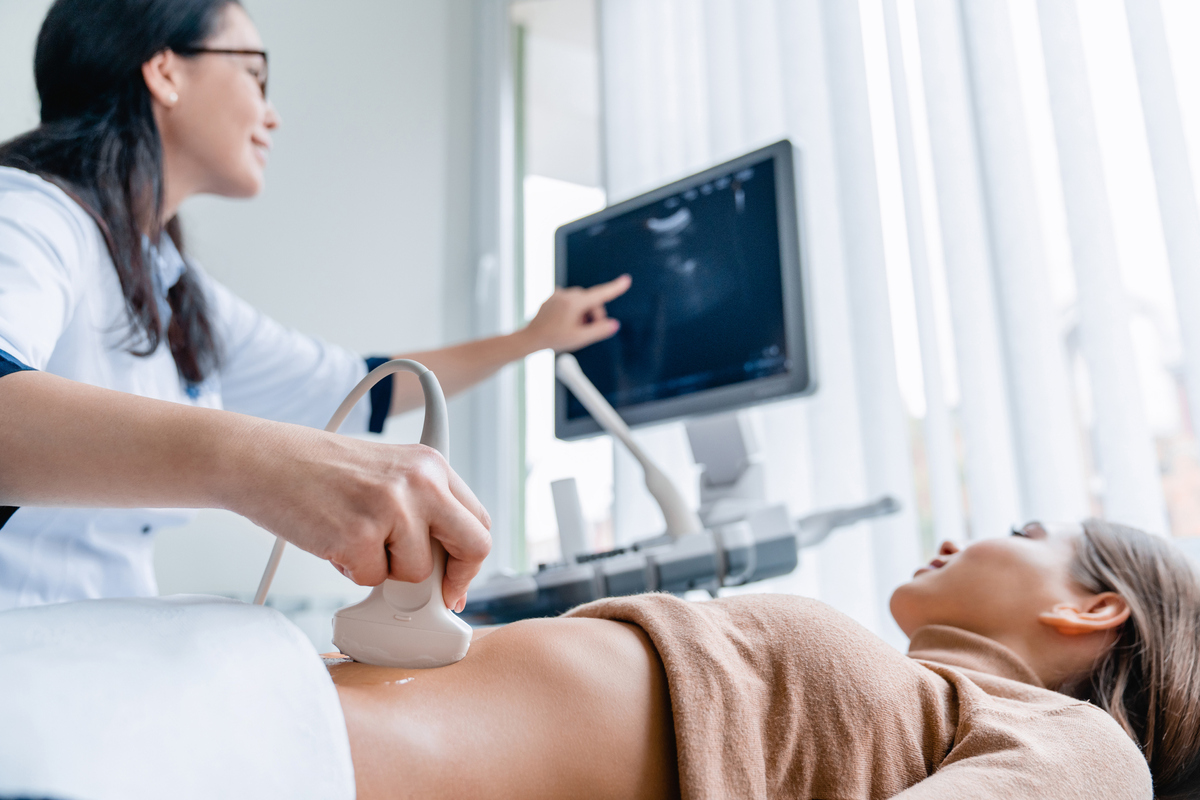Periods can be a real pain — literally and figuratively. What’s worse is pain before your period even decides to show up! But did you know that this pre-period pain may be one of the key signs of endometriosis?
The World Health Organization (WHO) says about 10% of women, or around 190 million, are affected by endometriosis. However, Dr. Mona Orady, MD, a gynecologic surgeon and endometriosis expert, suggests the condition might be even more prevalent.
Although endometriosis is common, figuring out if you have it isn’t as simple. On average, it takes 7 to 9 years for women to get the correct diagnosis. And it’s a progressive condition, so the symptoms tend to worsen over time.
Can you see endometriosis on an ultrasound? In short, no, not directly. But ultrasounds can help spot its effects. And proper diagnosis and treatment can make a big difference for those dealing with it.
What is endometriosis?
Although Dr. Orady says it’s difficult to characterize, someone with endometriosis has abnormal tissue outside of their uterus. According to the Mayo Clinic, “Endometriosis tissue acts as the lining inside the uterus would — it thickens, breaks down, and bleeds with each menstrual cycle.”
Additionally, endometriosis can grow into other parts of your pelvis and in areas like your rectum and bowels. “When they collect on the ovaries, they create cysts called endometriomas, filled with endometriosis tissue, and it can cause a lot of problems,” says Dr. Orady.
The most common symptom of endometriosis is pain before, between, and during periods. But it doesn’t stop there; other symptoms include fertility issues, gastrointestinal symptoms, and pain with sex, among others.
How do I know if I have endometriosis?
Diagnosing endometriosis can be quite challenging because the symptoms mimic other conditions like irritable bowel syndrome (IBS) or urinary symptoms. “A lot of patients who think they have frequent urinary tract infections actually have endometriosis,” says Dr. Orady.
Similarly, endometriosis is sometimes misdiagnosed as dysmenorrhea, which is the medical term for painful periods. “That's a very easy way to distinguish between patients that just have primary dysmenorrhea or patients who have endometriosis because their pain starts before the bleeding starts,” says Dr. Orady.
Can ultrasound diagnose endometriosis?
Although you can’t technically see endometriosis on an ultrasound, you can observe its signs. “Sometimes you can see the endometriosis if there are big, deep infiltrating nodules, but most of the time, you're just seeing the effects,” adds Dr. Orady.
At birth, our organs have specific spots in our bodies. Our uterus sits in the middle, with an ovary on each side. However, some women are told they have a tilted uterus, leading to problems like pain during pelvic exams. “Almost always, that's endometriosis causing the uterus to shift,” says Dr. Orady.
Additionally, there are subtle signs providers might recognize during a pelvic exam, like tenderness along the connective tissue supporting your uterus. And in more severe cases, your uterus can become “fixed.” Dr. Orady says this is the presence of fibroids around the uterus, making it immovable.
However, she adds, if you have endometrioma, it can be detected on an ultrasound. Endometrioma is an endometriosis-filled cyst on the ovary.
Treating endometriosis
The standard treatment for women with endometriosis is laparoscopy, a procedure where the endometriosis is removed through surgery. If you’re not quite ready for that step, other options can help ease your symptoms.
“We can manage endometriosis symptoms by suppressing the period hormonally, usually with progesterone as our first-line treatment,” explains Dr. Orady. Additional options for managing symptoms include pelvic floor therapy, nerve blockers, or physical therapy.
However, Dr. Orady notes that in some instances, estrogen from birth control may worsen endometriosis. Always check with your healthcare provider to explore treatment options tailored to your situation.
Alternative diagnostic methods
Ultrasounds have a big advantage — they’re non-invasive. And they’re good at spotting the effects of endometriosis and ruling out other conditions with similar symptoms, like fibroids and ovarian cysts.
The tricky part is that many healthcare providers can’t confirm endometriosis without surgery. But the good news is that medical researchers are working on new ways to diagnose endometriosis and treat its symptoms, which looks promising.
What is the relationship between endometriosis and infertility?
One of the most common effects of endometriosis is infertility. It is often missed by doctors if there are no obvious symptoms. This condition of asymptomatic or "silent" endometriosis can lead many women to IVF and continued failure. For many, a diagnosis of unexplained infertility is attached to their medical history.
Enter ReceptivaDx — a test that can detect uterine inflammation linked to endometriosis. According to their website, and supported by more than 20 publications listed on it, it’s the only test that can pinpoint the leading causes of unexplained infertility in a single sample, including endometriosis, progesterone resistance, and endometritis. Pretty cool, right?
Navigating your healthcare decisions can be overwhelming, and it’s super important to have open communication with your healthcare provider. Discuss your options so you can make the best decision for your well-being. And don’t hesitate to advocate for yourself and seek support whenever you need it.
Join the conversation at Rescripted, where you can connect with others who have faced similar experiences. It’s a reminder that you are not alone.
Blair Sharp is a freelance writer who lives in Minnesota with her husband and son. Her words have been published in various publications, including Parents, SheKnows, The Bump, and Insider. Find her writing daily on LinkedIn and check out her weekly newsletter, Hey Freelancer! Head to her website www.blairsharp.com for more.



















